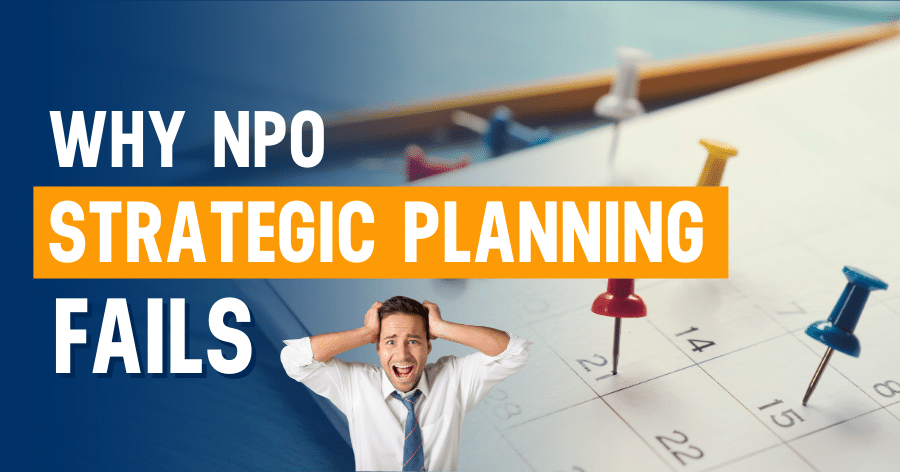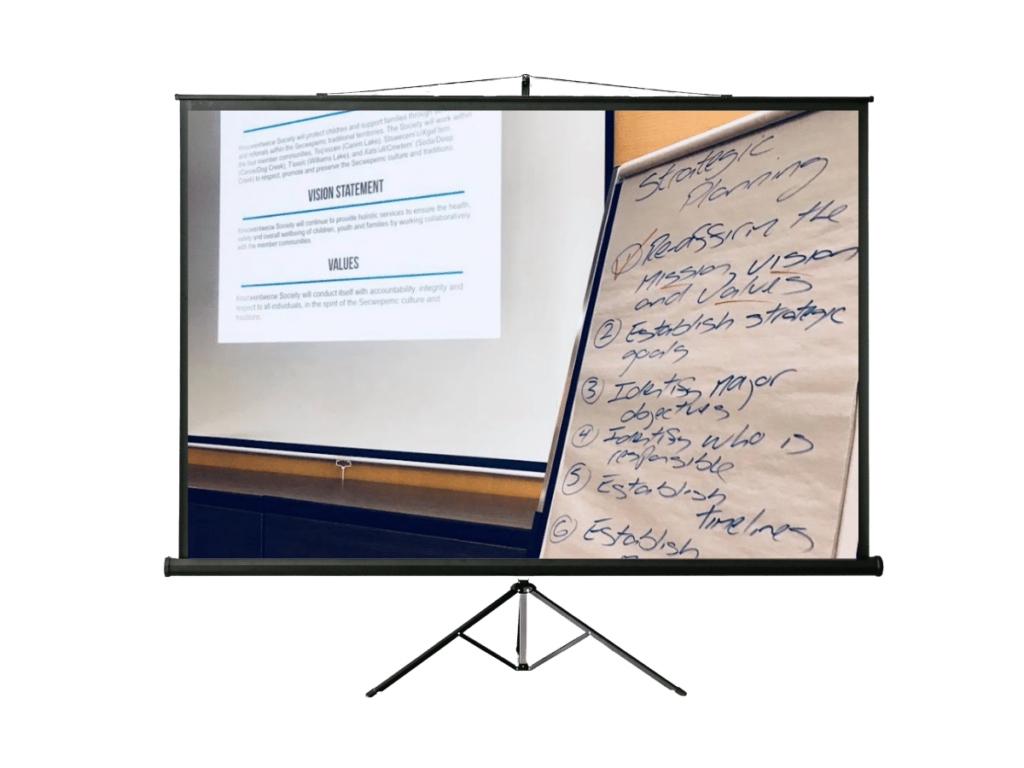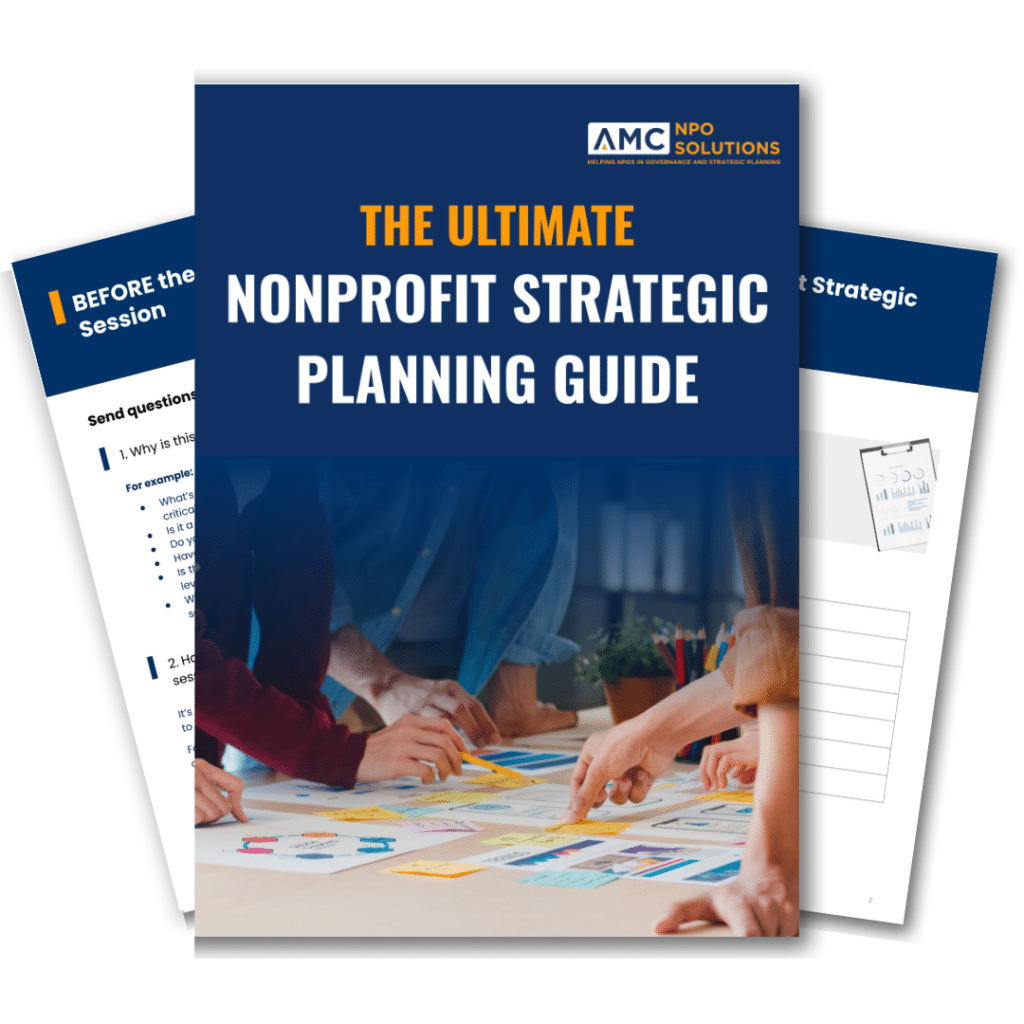
Your excitement is palpable. After months and years of appealing to them, your indecisive board has finally agreed to participate in a strategic planning session. Your organization will finally benefit from strategy and forward momentum, a plan will be in place, and you will long forget yesterday’s struggles. At least, that is the hope. Strategic planning is an excellent step for your nonprofit, one that can help your organization focus its energy and resources to make meaningful progress. The truth, however, is that not all strategic planning sessions are successful. Some never even get implemented. When done correctly, strategic planning can be the catalyst your organization needs to follow through with some of its most significant and far-reaching goals. How do you avoid strategic planning failure now that your board is willing to participate? Keep reading on to find out eight reasons why strategic planning fails.
8 Reasons Why NPO Strategic Planning Fails
1. Wrong Timing
Our first reason why strategic planning fails is due to timing. Timing is everything. In order to get the most out of your time together as a team, it is important to approach the session with a sense of purpose, anticipation, and strategy.
Rushing a strategic planning session will only lead to frustration and a failure to implement the changes that your organization truly needs. It is also important to consider other timing aspects: is your board of directors about to turn over?
If so, maybe waiting until the start of the new term—and new board members—is a better time to walk through strategic planning.
2. Undefined Language
One of the first steps when building a strategic plan is defining the parameters and key aspects of the plan. What do mission and vision mean? How are they different, and how do their unique definitions impact the development of each? What is the difference between a goal and a strategy?
It is easy to overlook the fact that our language and understanding of different terms can lead to confusion and even disagreement. Having clearly defined terms during a strategic planning session can mean the difference between failure and progress.
Whether or not your participants have experienced strategic planning, take some time before you start to explain the meaning and purpose of each element of a strategic plan.
3. Choosing the Wrong People
Strategic planning works best when participants are eager and open-minded and when have various strengths and backgrounds. A team that can think strategically and think differently will work together to create a thoughtful and useful strategic plan. Too many participants or too many past members who may not be looking to the future of the organization can limit the conversation and the overall progress of the session. Consider involving a variety of board members who bring diverse perspectives and skills to the table.
Also read: Choosing A Nonprofit Strategic Planning Facilitator: A Step-By-Step Guide & A Guide To Developing & Monitoring The Strategic Plan For Nonprofits
4. Short-Term Planning
A strategic plan should focus on more than the immediate goals and needs of an organization. Looking ahead three to five years helps the team stay focused on long-term goals and not day-to-day tasks. If the conversation and plan are limited to immediate needs, the plan will fail before it is ever implemented. It is important to review your strategic plan regularly, but while planning, always think long-term.
5. A Confining Meeting Space
What does the room have to do with the success of your strategic plan? More than you may realize. When participants are stuck in a dim, confined meeting space for more than a few hours, it begins to impact their mood, their thoughts, and ultimately their enjoyment). Find a meeting space that is open and comfortable, bright and conducive to thinking creatively. There should be enough space for everyone to feel at ease, as well as room for whiteboards or flip charts, and enough tables for everyone to find their own creative—and strategic—space.
An easy way to plan your organization’s future
Download a free complete guide on what to do before, during and after your strategic planning session.
6. Setting Unreachable Goals
There are many things that make a goal unreachable, but the biggest obstacle in strategic planning is setting too many goals, rendering them unreachable just by the sheer number. Consider the goals of your organization for the next year, three years, or five years. Do any of those goals overlap? Which ones are achievable and which ones do you have the resources to fulfil? Trim your goals down to the key five or six that will have an impact on your organization over the next five years. Having goals you can reach is important to avoiding a strategic planning failure.
7. Ignoring the Budget
This goes hand-in-hand with choosing achievable goals. If the resources are not available to accomplish the strategic plan, then the plan will be impossible to implement. Discussing the budget is a key aspect of your board, so reminding them to approach the strategic plan with the budget in mind shouldn’t be a strain on the participants. As you set goals, keep each other accountable for the budget and how it could impact the success or failure of each goal.
8. Delaying Action
Without action, every strategic plan would be a strategic failure. Implementing the plan is essential to see it benefit your organization for years to come. As you wrap up your strategic planning session, clarify when each participant will receive a report. Establish a time to discuss setting up committees to accomplish the aspects of the plan. Encourage follow-up conversations and even a quick post-session review of the strategic plan. Whatever you do, be prepared to take action.
By avoiding these strategic planning failure examples, you and your team will create a plan that profoundly impacts your organization. Take time to ensure you have everything in place for a deliberate, honest, and creative conversation about your organization and your strategic planning session will be exactly what your organization needs.
Also read:
- The Ultimate Guide to the Nonprofit Strategic Planning Process
- Join AMC as a Governance Trainer & Strategic Planning Facilitator
- Key Elements of Strategic Planning Sessions with Trista & Joanna
Create a brighter future for your organization with AMC
AMC’s skilled strategic planning facilitators can help you navigate complex issues and build the transformative plan you need for success.
Whether you have a specific goal, troublesome problem or a new exciting opportunity you need assistance navigating -AMC’s customized strategic planning sessions will help.
Contact us today to learn how AMC’s Strategic Planning facilitators can help your organization develop, improve, and grow.


